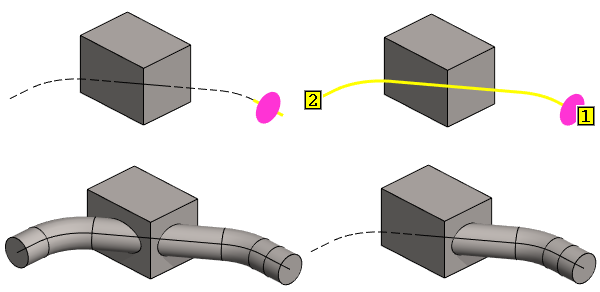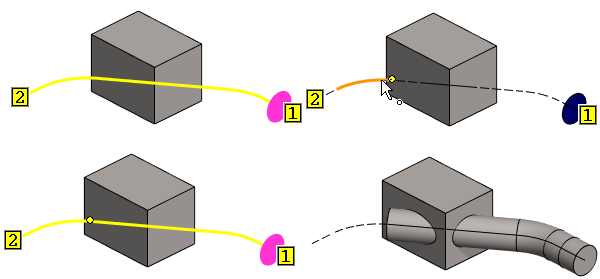Sweep Feature Data
Define the sweep data
- If necessary, select more guide lines or remove guide lines.
- If necessary, change the cross-section to be swept (in the list: surface) to another cross-section.
- If necessary, define the trim of the sweep.
- If necessary, enter the Offset that adjusts the length of the sweep.
- If necessary, change the boss sweep to cutout sweep or vice versa.
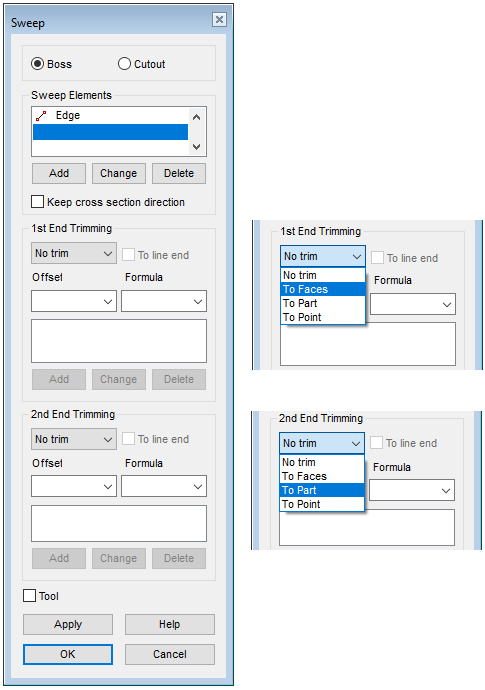
Dialog Box Options
- Boss/Cutout
- Defines whether the sweep adds (boss) or removes (cutout) material.
- If the part model does not yet have volume geometry, the only option is Boss.
- Sweep elements
- View, change or remove the elements you have selected for sweep with the Add, Change or Delete buttons.Delete the line that controls the sweep
- Select an element from the list.
- Delete the element:
- Click the following button: Delete or
- Open the context-sensitive menu and select
 Delete.
Delete.
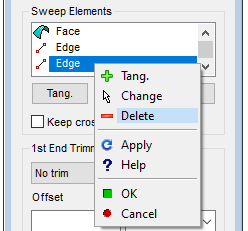
- Keep cross section direction
- The direction of the cross section is kept during the sweep (A) when this checkbox is selected. Otherwise, the cross section normal will coincide with the line selected for the sweep (B).
- Trimming of the first (1.) end
- Defines the trimming of the first end of the sweep feature to either an element selected from the model or prevents trimming. The ends are indicated in the model with the numbers 1 and 2. Select one of the following:
- Offset
- Defines an offset value for the sweep when the sweep does not have end trimming, or the end is trimmed to face, part or edge.An example of an offset for a guide curve
- Above on the right: No offset value, so the sweep extends to the ends of the guide line.
- Below on the left: At both ends, offset has a positive value.
- Below on the right: At both ends, offset has a negative value.
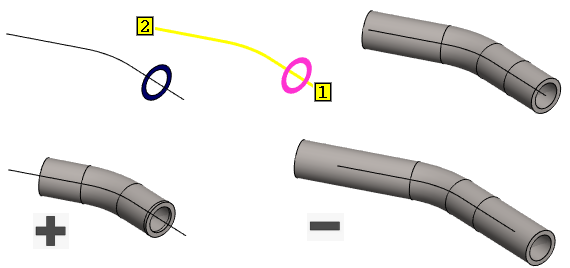
Example of offset on surfaces
- Above on the right: No offset value, so the sweep extends to the ends of the guide line.
- Below on the left: At both ends, offset has a positive value.
- Below on the right: At both ends, offset has a negative value.

- Formula
- Defines the offset variable.
- Trimming of the second (2.) end
- Defines the trimming of the other end of the sweep feature.
- Tool
- Defines the sweep feature as a tool.
- Apply
- Preview by clicking the Apply button in the dialog box. This will show you how the model would look if you confirmed the feature data by clicking OK. If necessary, you can still edit the feature data.


 and then click the line.
and then click the line.
